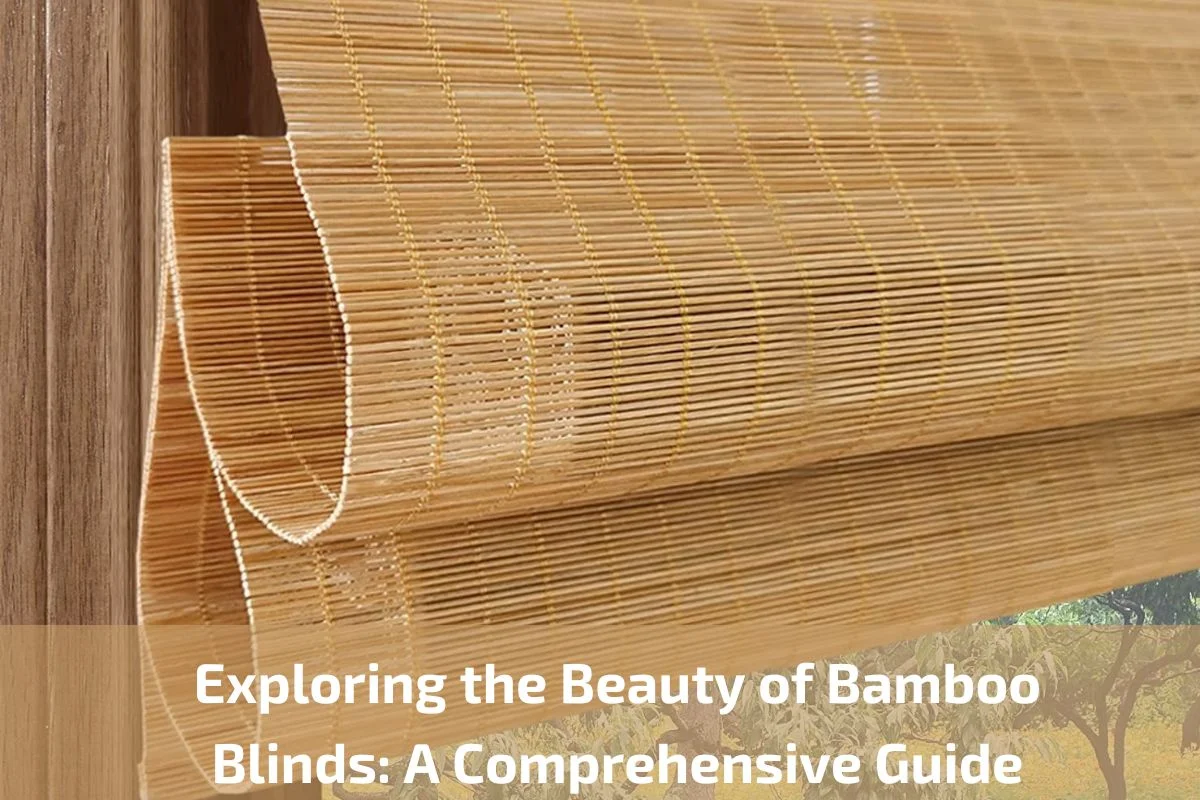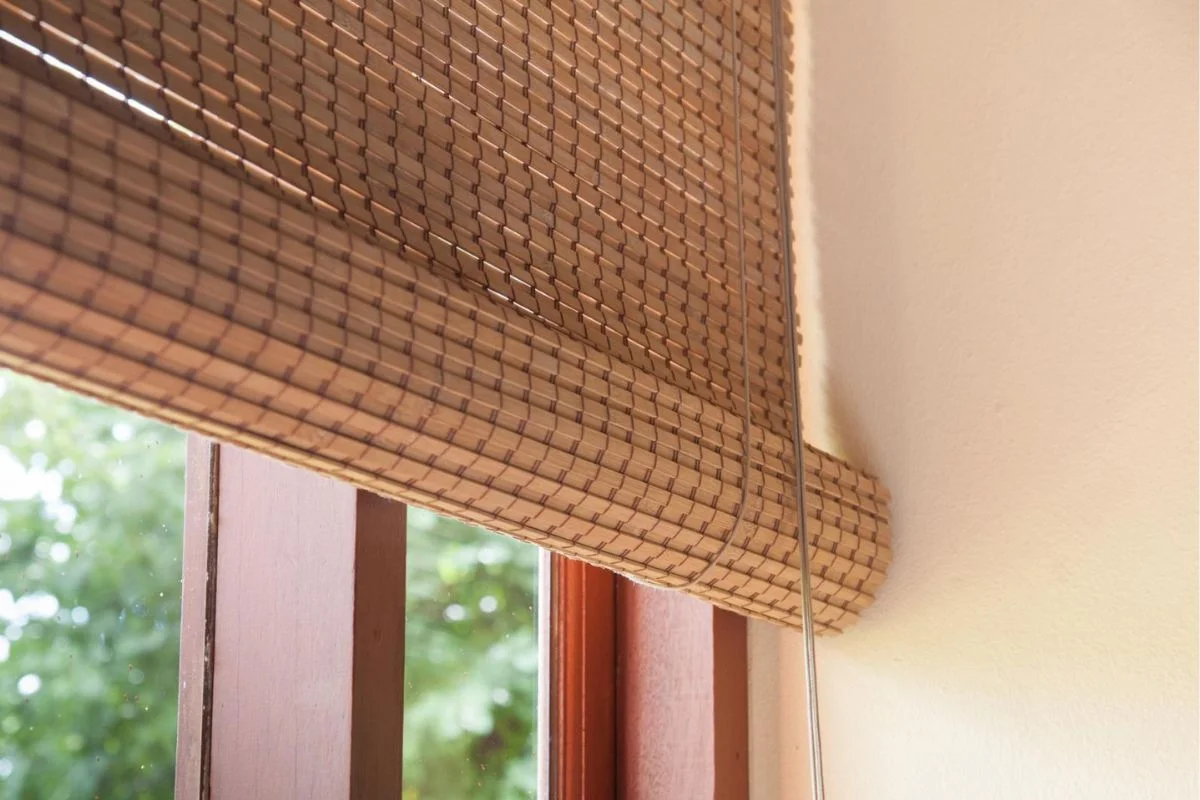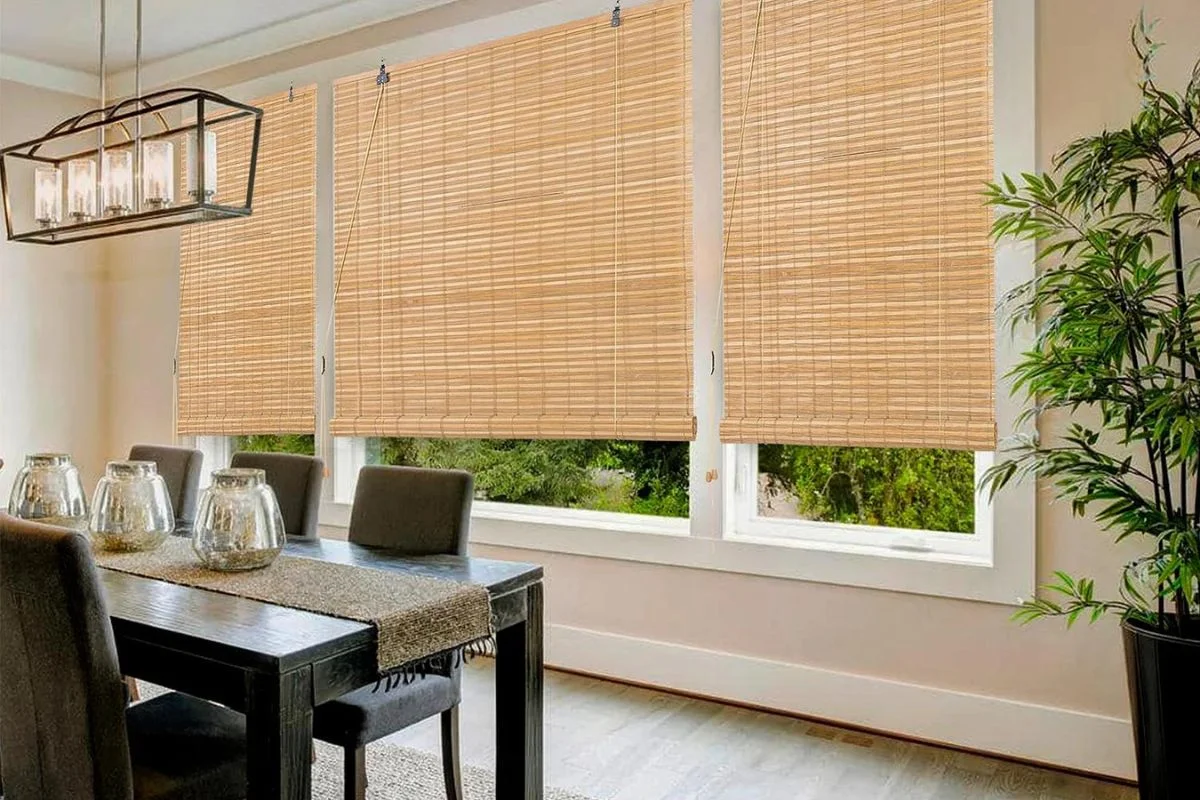
Bamboo blinds offer a unique blend of natural beauty, sustainability, and functionality that make them a popular choice for homeowners seeking to enhance their living spaces. With their earthy charm and eco-friendly appeal, bamboo blinds have become a staple in interior design, adding warmth and character to any room.
In this comprehensive guide, we will explore the beauty of bamboo blinds and delve into everything you need to know about these versatile window treatments. From their eco-friendly attributes to their stylish design options and practical benefits, we’ll provide valuable insights to help you make informed decisions for your home décor.
Brief Overview of Bamboo Blinds
Bamboo blinds are window treatments made from natural bamboo fibers, renowned for their durability, eco-friendliness, and aesthetic appeal. These blinds are crafted from renewable bamboo stalks, which are harvested and processed to create versatile window coverings suitable for various interior styles. Bamboo blinds offer a unique combination of functionality and natural beauty, making them a popular choice for homeowners seeking sustainable and stylish window treatments.
Importance of Bamboo Blinds in Home Décor
Bamboo blinds play a significant role in home décor by adding a touch of natural elegance and warmth to any space. Here are several reasons why bamboo blinds are essential in enhancing interior design:
Natural Aesthetic: Bamboo blinds introduce the organic beauty of nature into your home, creating a soothing and inviting atmosphere. The unique texture and grain of bamboo complement a variety of décor styles, from modern to rustic, adding visual interest to windows.
Versatility: Bamboo blinds come in a range of styles, including roll-up, Roman, and panel blinds, offering versatility to suit different window sizes and shapes. They can be customized with various finishes, stains, or paints to match existing furniture and color schemes.
Light Control: These blinds offer effective light control, allowing you to adjust the amount of natural light entering your space. By simply adjusting the blinds, you can create the desired ambiance, whether you prefer bright and airy or cozy and dimly lit rooms.
Privacy: Bamboo blinds provide privacy without compromising on style. When fully closed, they offer complete privacy, making them ideal for bedrooms, bathrooms, and other private areas of the home.
Eco-Friendly Choice: Bamboo is a sustainable and renewable resource that grows quickly and requires minimal water and pesticides to thrive. Choosing bamboo blinds contributes to environmentally responsible living and reduces the reliance on non-renewable materials.
Durability: Bamboo blinds are known for their durability and longevity, making them a wise investment for homeowners. With proper care and maintenance, they can withstand daily use and retain their beauty for years to come.
Advantages and Disadvantages of Bamboo Blinds
Advantages:
Natural Aesthetic Appeal: Bamboo blinds add a touch of natural beauty to any room with their unique texture and earthy tones, enhancing the overall décor.
Eco-Friendly: Bamboo is a renewable resource that grows rapidly and requires minimal pesticides and water, making bamboo blinds an environmentally sustainable choice.
Durability: Bamboo blinds are known for their durability and resilience, making them suitable for high-traffic areas and long-term use.
Versatility: Available in various styles and finishes, bamboo blinds can complement a wide range of interior design themes, from contemporary to traditional.
Light Control: These blinds offer effective light control, allowing users to adjust the amount of natural light entering a room for optimal comfort and ambiance.
Privacy: When fully closed, bamboo blinds provide privacy without completely blocking out natural light, making them ideal for bedrooms and living spaces.
Disadvantages:
Vulnerability to Moisture: Bamboo blinds may warp or develop mold in high-humidity environments such as bathrooms or kitchens, requiring extra care to maintain.
Limited Insulation: While bamboo blinds offer some insulation against heat and cold, they are not as effective as heavier window treatments such as curtains or drapes.
Fading in Sunlight: Prolonged exposure to direct sunlight may cause bamboo blinds to fade or discolor over time, especially if they are not treated with UV-resistant finishes.
Maintenance Requirements: Bamboo blinds require regular cleaning and occasional maintenance to keep them looking their best and prevent damage from dust, dirt, and moisture.
Cost: While bamboo blinds are generally affordable, higher-quality options may come with a higher price tag, especially for custom sizes or designs.
Limited Light Blockage: While effective for light control, bamboo blinds may not provide complete blackout capabilities, making them less suitable for rooms that require total darkness, such as home theaters or bedrooms.
Stylish Design Ideas for Bamboo Blinds
Bamboo blinds offer endless possibilities for enhancing the visual appeal of your space while maintaining a natural and eco-friendly ambiance. Here are some stylish design ideas to inspire your bamboo blinds décor:
Natural Bamboo Finishes: Embrace the raw beauty of bamboo by choosing blinds with a natural finish. These blinds showcase the organic texture and color variations of bamboo, adding warmth and character to your windows.
Stained or Painted Bamboo: For a more polished look, opt for bamboo blinds with a stained or painted finish. Choose stains or paints that complement your existing décor, whether it’s a rich espresso for a modern feel or a soft white for a coastal-inspired look.
Incorporating Patterns and Textures: Add visual interest to your space by selecting bamboo blinds with intricate weaves or patterns. Woven patterns, such as herringbone or chevron, can create a dynamic focal point and elevate the overall design of your room.
Layering with Curtains or Drapes: Combine bamboo blinds with curtains or drapes to create a layered window treatment that adds depth and dimension to your space. Opt for lightweight fabrics in complementary colors or patterns to achieve a cohesive and stylish look.
Mixing with Natural Materials: Complement your bamboo blinds with other natural materials, such as rattan, jute, or wood, to create a harmonious and cohesive design scheme. Incorporate natural textures and earthy tones throughout your space for a seamless and inviting look.
Adding Decorative Trims or Edgings: Customize your bamboo blinds with decorative trims or edgings to add a personalized touch to your windows. Choose trims in contrasting colors or metallic finishes for a contemporary twist, or opt for tassels or fringe for a bohemian vibe.
Layering with Sheer Fabrics: Layer bamboo blinds with sheer fabrics, such as voile or organza, to soften the harsh sunlight while maintaining privacy. This combination creates a light and airy feel, perfect for creating a relaxed and inviting atmosphere.
Customizing with Bamboo Valances: Finish off your bamboo blinds with bamboo valances or cornices for a polished and cohesive look. Bamboo valances add a finishing touch to your windows while enhancing the natural beauty of your blinds.
Maintenance Tips for Bamboo Blinds
Maintaining bamboo blinds is essential to ensure their longevity and keep them looking their best. Here are some maintenance tips to help you care for your bamboo blinds effectively:
Regular Dusting: Dust your bamboo blinds regularly using a soft brush attachment or a microfiber cloth to remove surface dirt and debris. Start from the top and work your way down to prevent dust from settling into the blinds’ fibers.
Spot Cleaning: For stubborn stains or spills, spot clean your bamboo blinds using a mild detergent or soap diluted in warm water. Gently blot the affected area with a soft cloth or sponge, being careful not to scrub too hard to avoid damaging the bamboo fibers.
Avoid Excessive Moisture: Bamboo blinds are susceptible to moisture damage, so avoid exposing them to excessive humidity or moisture. If installed in high-humidity areas such as bathrooms or kitchens, consider using a dehumidifier or exhaust fan to reduce moisture levels.
Protect from Direct Sunlight: Prolonged exposure to direct sunlight can cause bamboo blinds to fade or become brittle over time. Use curtains, drapes, or UV-blocking window film to shield your blinds from harsh sunlight and prolong their lifespan.
Rotate Blinds Regularly: Rotate your bamboo blinds regularly to ensure even wear and prevent uneven fading. This helps distribute sunlight exposure and maintains the blinds’ appearance over time.
Inspect for Damage: Periodically inspect your bamboo blinds for any signs of damage, such as broken slats or frayed edges. Replace damaged components as needed to prevent further deterioration and ensure the blinds continue to function properly.
Avoid Harsh Cleaning Agents: Avoid using harsh cleaning agents, abrasive cleaners, or chemical solvents on your bamboo blinds, as these can damage the natural fibers and finishes. Stick to mild cleaning solutions and gentle cleaning techniques to preserve the integrity of the blinds.
Professional Cleaning: Consider professional cleaning services for deep cleaning or restoration of heavily soiled or damaged bamboo blinds. Professional cleaners have the expertise and equipment to clean and restore blinds safely and effectively.
Conclusion
In conclusion, bamboo blinds are not just window coverings; they are versatile and eco-friendly additions to your home décor that offer numerous benefits. From their natural aesthetic appeal to their durability and light control capabilities, bamboo blinds enhance the ambiance of any room while contributing to a sustainable lifestyle.




